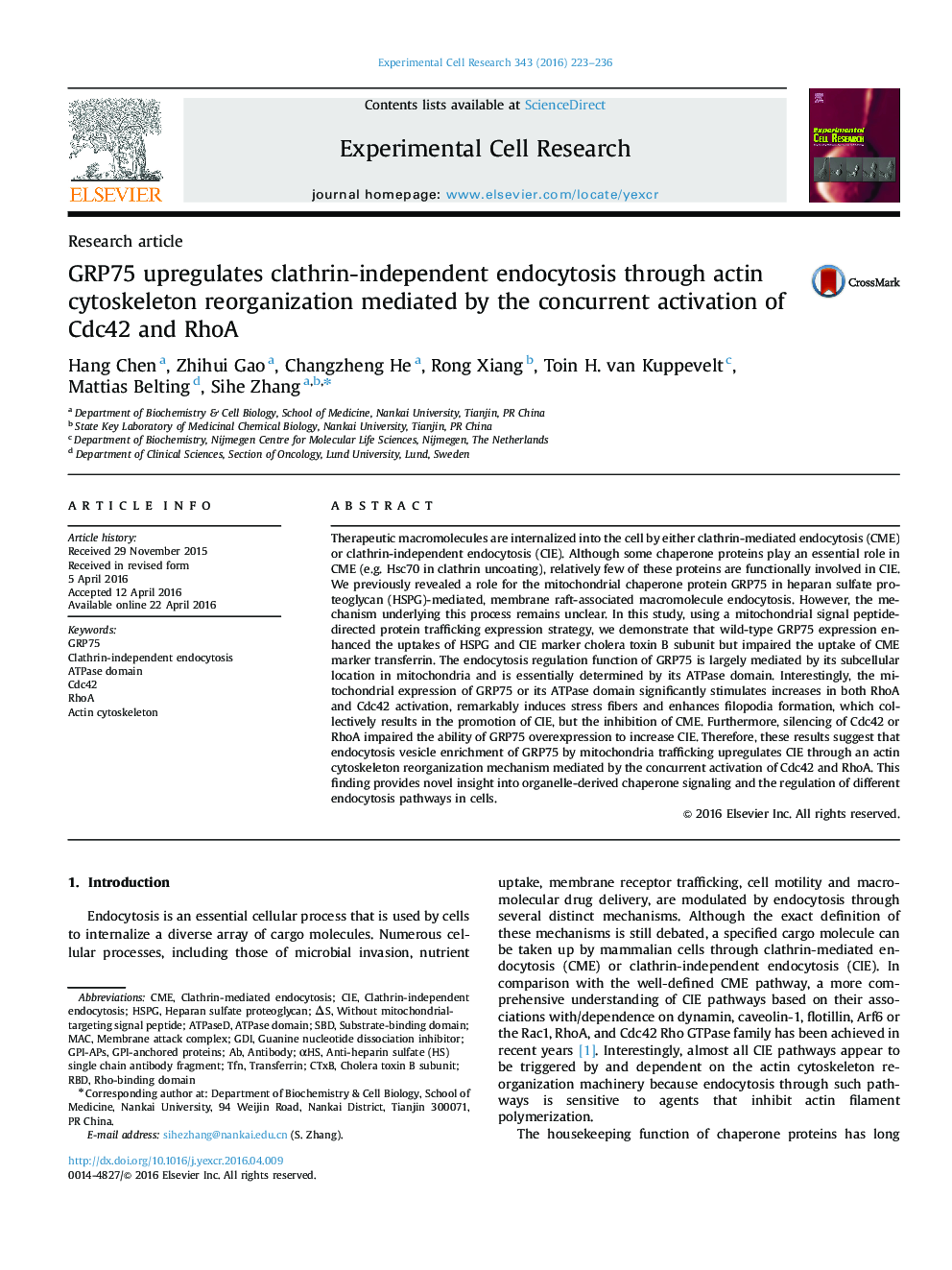| Article ID | Journal | Published Year | Pages | File Type |
|---|---|---|---|---|
| 2129983 | Experimental Cell Research | 2016 | 14 Pages |
•GRP75 promotes CIE but inhibits CME.•Mitochondrial localization and ATPaseD in GRP75 regulate endocytosis.•GRP75 acts upstream of the concurrent activation of Cdc42 and RhoA.•GRP75 and ATPaseD increase stress fibers and promote filopodia formation.
Therapeutic macromolecules are internalized into the cell by either clathrin-mediated endocytosis (CME) or clathrin-independent endocytosis (CIE). Although some chaperone proteins play an essential role in CME (e.g. Hsc70 in clathrin uncoating), relatively few of these proteins are functionally involved in CIE. We previously revealed a role for the mitochondrial chaperone protein GRP75 in heparan sulfate proteoglycan (HSPG)-mediated, membrane raft-associated macromolecule endocytosis. However, the mechanism underlying this process remains unclear. In this study, using a mitochondrial signal peptide-directed protein trafficking expression strategy, we demonstrate that wild-type GRP75 expression enhanced the uptakes of HSPG and CIE marker cholera toxin B subunit but impaired the uptake of CME marker transferrin. The endocytosis regulation function of GRP75 is largely mediated by its subcellular location in mitochondria and is essentially determined by its ATPase domain. Interestingly, the mitochondrial expression of GRP75 or its ATPase domain significantly stimulates increases in both RhoA and Cdc42 activation, remarkably induces stress fibers and enhances filopodia formation, which collectively results in the promotion of CIE, but the inhibition of CME. Furthermore, silencing of Cdc42 or RhoA impaired the ability of GRP75 overexpression to increase CIE. Therefore, these results suggest that endocytosis vesicle enrichment of GRP75 by mitochondria trafficking upregulates CIE through an actin cytoskeleton reorganization mechanism mediated by the concurrent activation of Cdc42 and RhoA. This finding provides novel insight into organelle-derived chaperone signaling and the regulation of different endocytosis pathways in cells.
Graphical abstractFigure optionsDownload full-size imageDownload high-quality image (202 K)Download as PowerPoint slide
